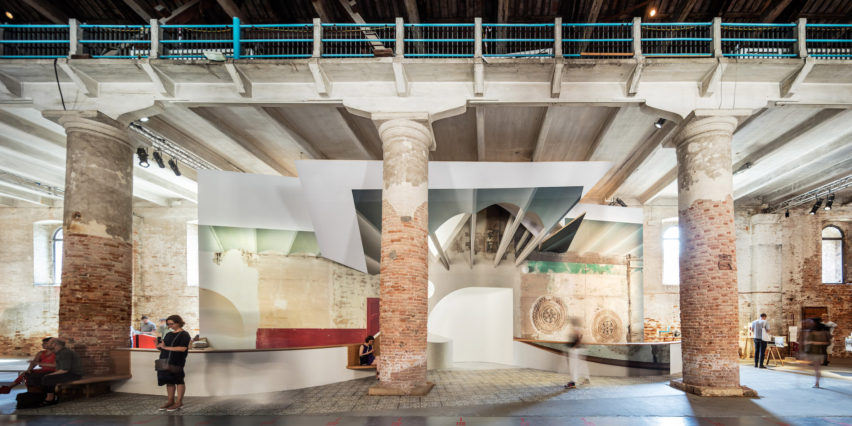
"We treat every project as research" say Ricardo Flores and Eva Prats
Flores & Prats stood out at this year's Venice Architecture Biennale, showing a full-scale mockup of its Sala Beckett theatre and a tiny woodland chapel. As the event comes to a close, the studio founders speak to Dezeen about how they treat every project as an experiment.
Ricardo Flores and Eva Prats founded their eponymous studio in Barcelona over two decades ago, after meeting at the office of Spanish architects and then-partners Enric Miralles and Carme Pinós.
Since then the pair have built up a portfolio that combines rehabilitating old buildings with creating new public spaces, from transforming an old flour windmill in Mallorca into an exhibition centre, to establishing new public plazas in Barcelona.
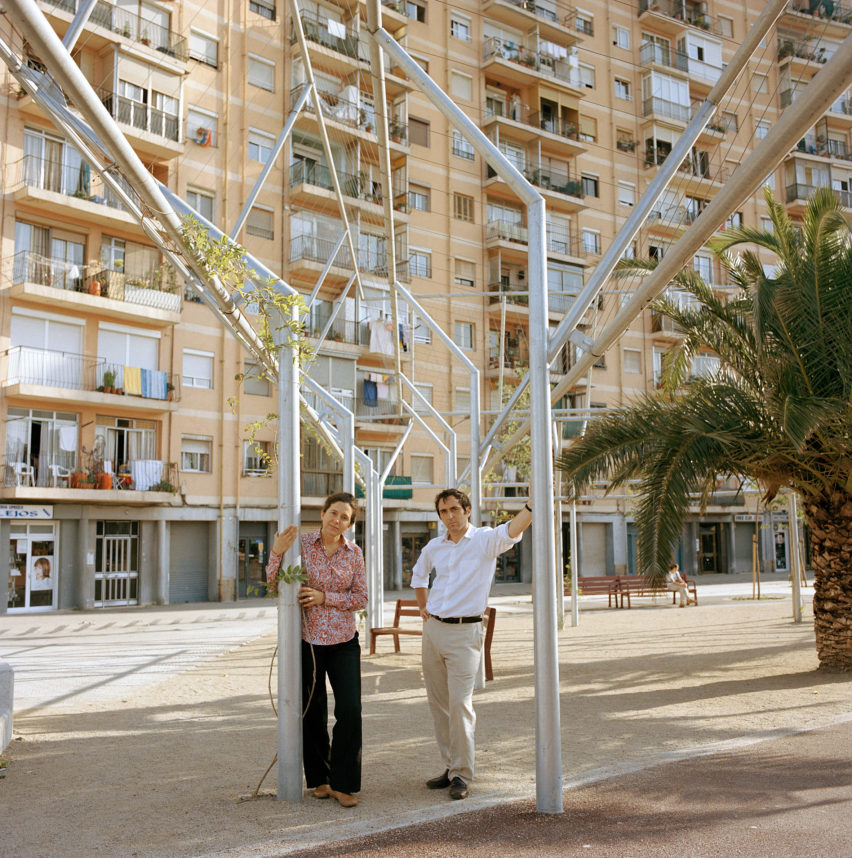
Their aim from the start, said Flores, has been to participate "in the discussions the city opens up".
"From the beginning of the office, we had these interests in rehabilitation and in participating in public work for public clients," he explained.
Dilapidated factory became Sala Beckett theatre
Their latest project encapsulates both of these aims. Sala Beckett is a community theatre housed inside a rehabilitated factory.
Flores and Prats won the commission precisely because, unlike some of their competitors, they felt that bringing the dilapidated old structure back to life was more appropriate than replacing it with an eye-catching new building.
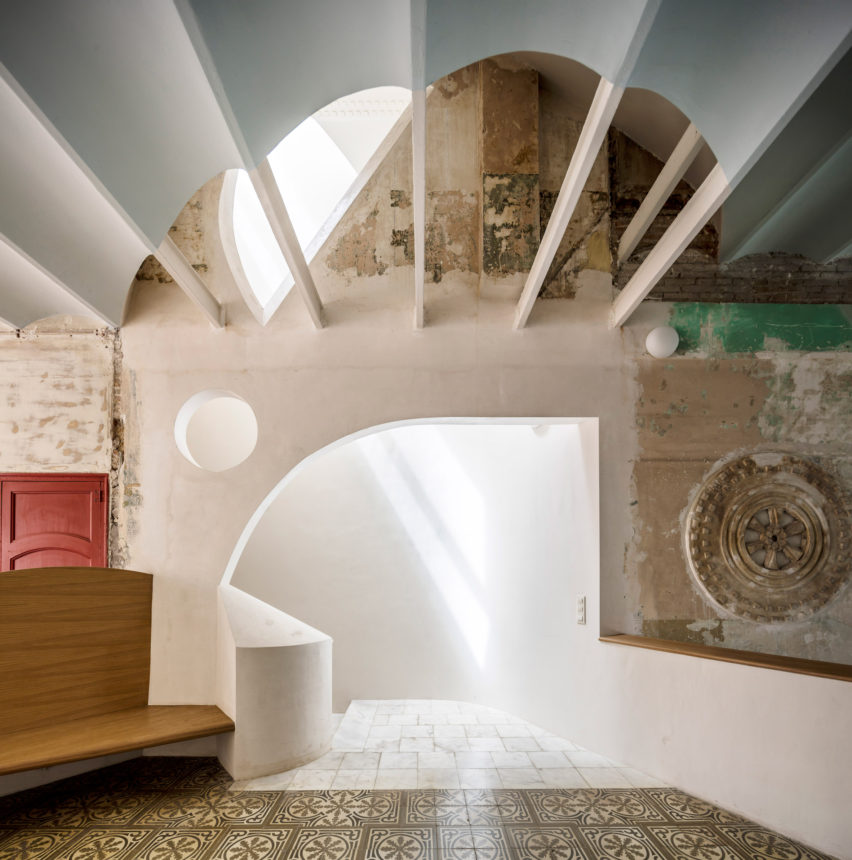
Their renovation involved keeping as many traces of the old structure as possible, from decorative floor tiles to finely crafted doors.
"We thought that, with Sala Beckett, we had to make a statement or a manifesto – whatever you want to call it – and open up a discussion in the realm of the architects," said Flores.
"How are we treating our heritage? Are we going to keep on demolishing it? Do we really want to lose our memories?"
"Buildings have to be useful, not ruins"
As well as engaging with history in the design process, the architects have remained involved in the development of the building now that it is complete, through constant dialogue with director Tony Casares and the theatre's staff.
According to Prats, this is an important part of their architectural ethos.
"We treat every project as research," she explained. "We learn from the things that we observe, as one project moves to another one, even if it's another programme and another client."
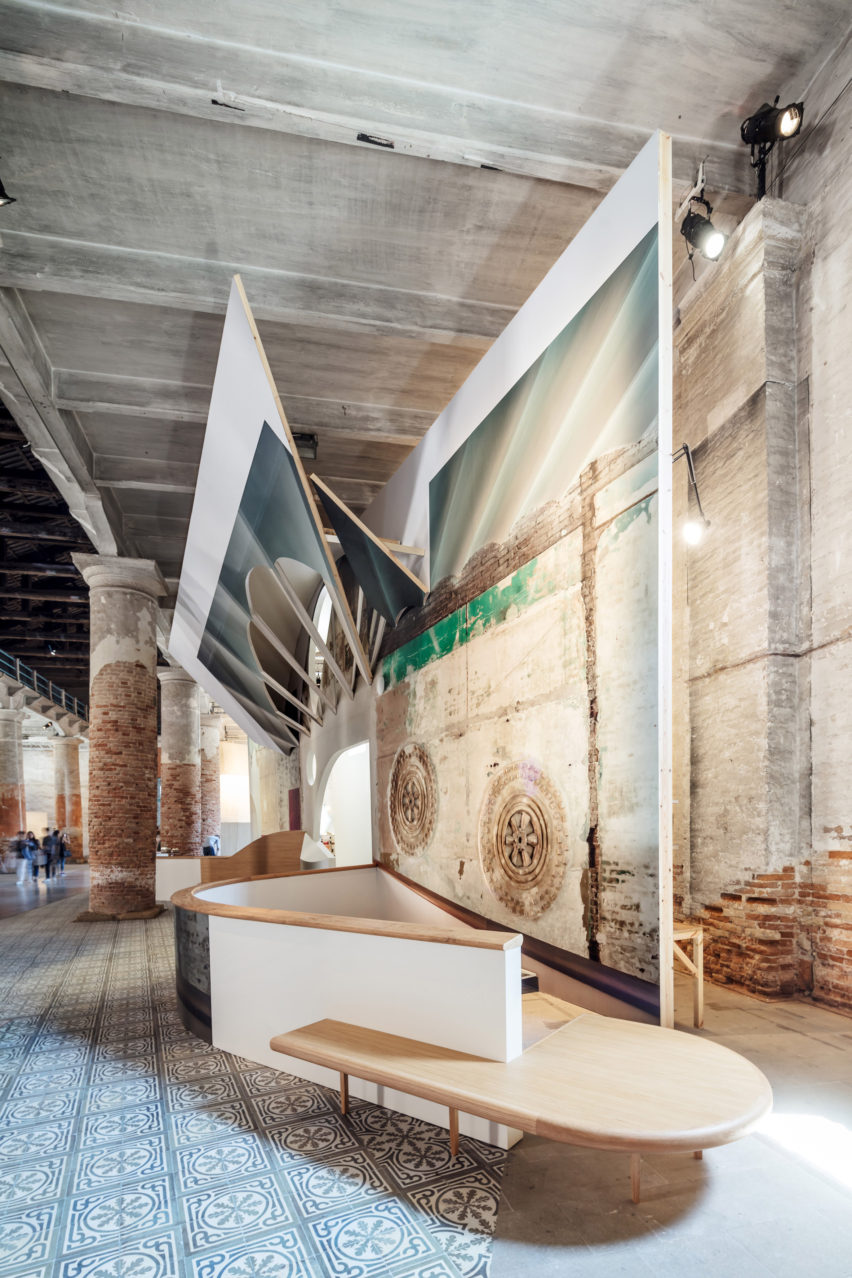
This research-driven approach was central to the studio's installation at this year's Venice Architecture Biennale, for the exhibition curated by Grafton Architects.
The front of the installation is a near-exact replica of a space in the theatre, with even the exact lighting conditions of the original recreated, thanks to the use of an existing window. Meanwhile behind, in a "backstage area", are dozens of models showing the amount of work that went into creating this space, even though it looks like it was barely changed in the renovation.
"All these things in the backstage area of the piece are a reflection, a discussion about how we deal with heritage," said Flores.
"Buildings have to be useful, not ruins. So how do you make them look like you haven't touched them, but in fact you've touched them a lot?"
Vatican chapel channels a beam of sunlight
The duo were also one of the 10 studios asked to explore the meaning of the chapel in the 21st century, for the Vatican City's biennale debut. Their response was barely a building – more an oversized wall, designed simply to channel a beam of sunlight down onto an altar.
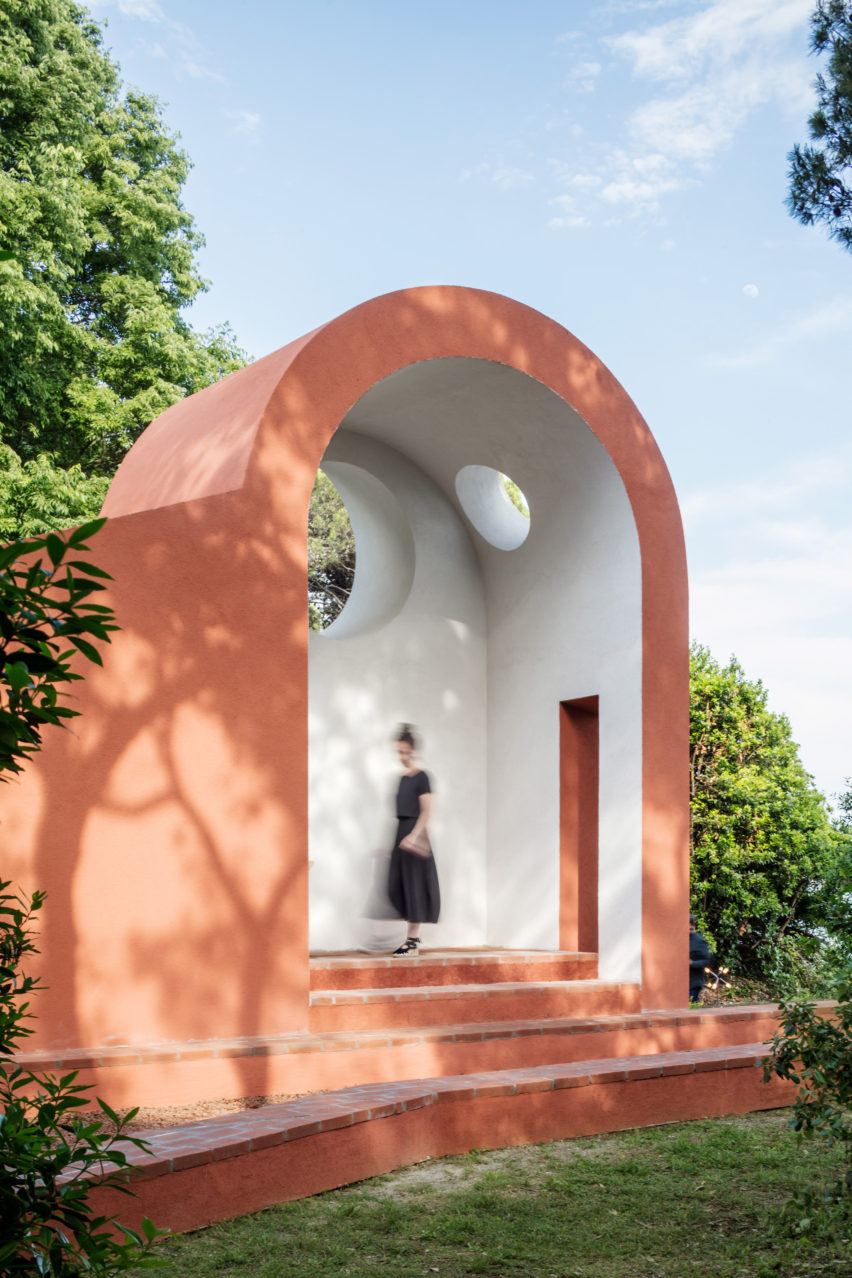
They say their aim both here and in Sala Beckett is to show the beauty in "this state of open air".
"When you get inside a place that is outside, it moves you," said Flores. "We hope that, with our two proposals at Venice, we can celebrate this state of ruin, of light passing through."
The Venice Architecture Biennale concludes this weekend.
Read on for the full, edited transcript of the interview with Ricardo Flores and Eva Prats:
Amy Frearson: Can you start by telling me a little bit about yourselves? What is the main focus of your practice?
Ricardo Flores: All the basis of our work is in public competitions, participating in the discussions the city opens up.
At the beginning of our practice, we started to participate in competitions on public spaces. In Barcelona it was a subject to be developed. There was a lot of work on that and small offices could be a part of it. At the same time, we looked at ways of rehabilitating and reusing pieces of the city that were disused but offered possibilities of new programmes.
From the beginning of the office, we had these interests in rehabilitation and in participating in public work for public clients. Most of our work is dedicated to these public clients, even if we have some private commissions as well, but the subject varies constantly.
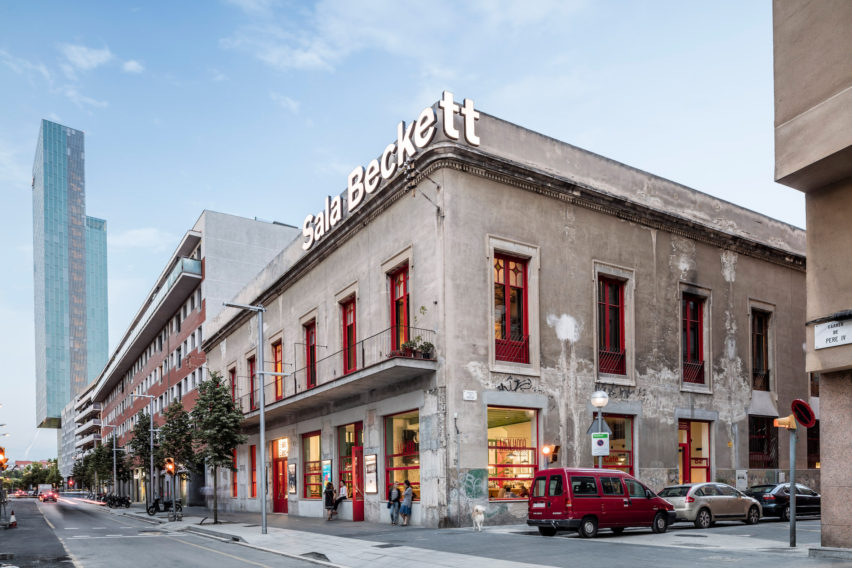
We've been involved in public housing/social housing, renovations for museums, a civic centre, a cultural centre in Mallorca, and a drama centre for the Sala Beckett theatre here in Barcelona.
We've been moving from different programmes, almost never repeating the subject. That was something desired by us – to get into new worlds.
Amy Frearson: How would we describe your architectural approach?
Eva Prats: We're avoiding the formula; we treat every project as research.
We learn from the things that we observe, as one project moves to another one, even if it's another programme and another client. We learn how to approach a project and also later how to take information out of a project, things that make a building come to life and make a longer story. And the longer story jumps from one project to another.
Amy Frearson: Tell me about the project you're presenting in Venice, the Sala Beckett theatre in Barcelona, and the process you went through to create it.
Eva Prats: The Sala Beckett is run by a foundation that has been in the city for more than 20 years and they have a good reputation. But they had problems in the venue they used to have and they had to move from there.
The municipality offered them this building. The building was definitely not listed. It was a building with an interesting origin. It was a workers' cooperative from the beginning of the 20th century until the 1980s. The neighbours still had memories of it and were seeing the building becoming ruined, little by little.

When the competition started, Sala Beckett director Tony Casares made all the five teams that were competing meet up. We had a big table in the previous Sala Beckett space, and he explained what Sala Beckett was. It seemed to us that he was describing our studio when he described their way of research and testing.
Out of the five teams, two of them proposed pulling down the building and, of the three others, we all had a different attitude.
We were very keen on keeping it. We really liked the building, particularly the generosity of the dimensions. In buildings from this former industrial period, you find ceilings up to five or six metres high.
We won the competition and that started a very close relationship with the director.
Ricardo Flores: One of the biggest challenges of this project was finding a way to make the past participate in the future of the building. There were all these scars, all the remains of the lives that had been staying there for decades.
Tony at the beginning said: "Let's not banish the cause of this building”. That was very nice to hear. It was very difficult, because it was something that was very fragile, very subtle, and construction works can be very heavy, very destructive and violent. But we worked a lot to keep all of this atmosphere of the past times.
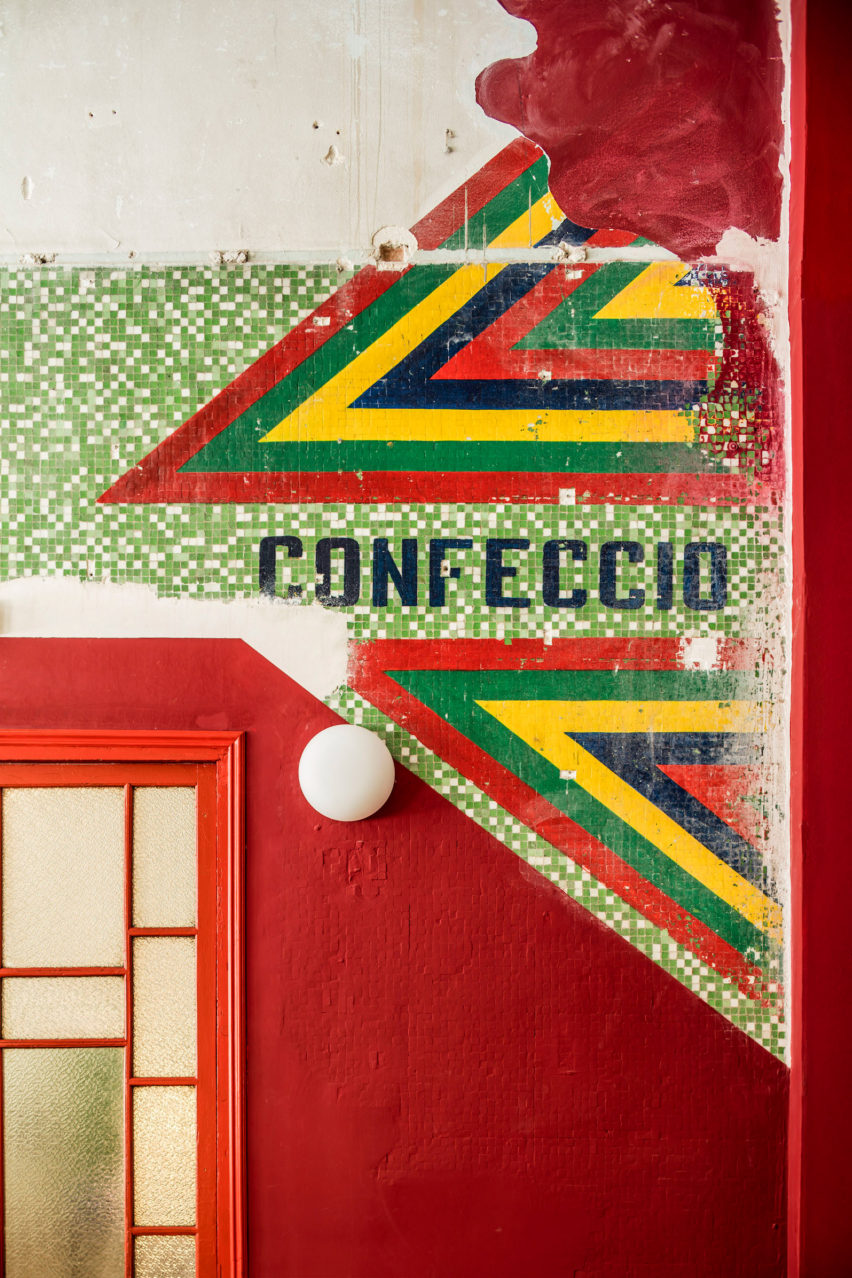
So now you can still see all these kind of causes, as Tony says, of the old cooperative and the different people that stayed there, but also the ghosts of Sala Beckett, because they also produce a lot of new stories, and they need a past and a future in the same way.
One of the things that Tony said he wanted was a building that had already some stories, in the walls, in the roofs, in the pavements. When they arrived they wanted to feel the company of the different actors that had passed before them. That was something very complex to obtain but very satisfactory in the end.
Eva Prats: It was difficult because the building had been closed and had to adhere to new codes, for fire, acoustics, etc. A lot of money had to be invested in the conditions of the building, and construction was difficult with all the new reinforcements that we had to make.
To keep all these traces on the walls, we had to protect them every day during construction.
Amy Frearson: Is renovating and repurposing old buildings something you strive to do whenever possible?
Ricardo Flores: Well yes. If you look back to the beginning of our office, at that moment in Barcelona there was a lot of demolitions here in the old town that you wouldn't believe. We really suffered to see buildings come down with beautiful pavings, beautiful staircases and handrails. If they are not catalogued, then nobody cares.
We think that heritage is in the traces of the everyday. So all these elements that we have saved in Sala Beckett, if you look from the eyes of heritage, don't have any weight. But for us they explain the times that have passed and the lives of the city.
Those pavings show how pavings were done in Barcelona in the 1920s and 30s, they show a moment. So when you break these simple pieces, you are saying the everyday is not a treasure. All these things are showing us how people lived, showing us the real past of this city.
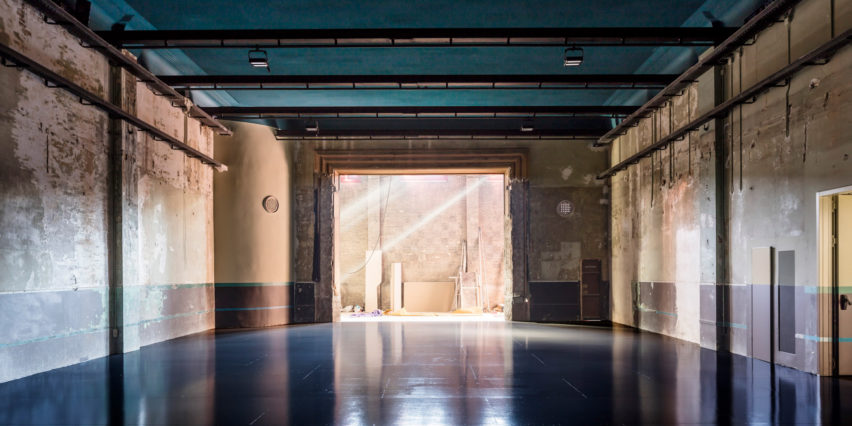
We thought that, with Sala Beckett, we had to make a statement or a manifesto – whatever you want to call it – and open up a discussion in the realm of the architects. How are we treating our heritage? Are we going to keep on demolishing it? Do we really want to lose our memories?
Eva Prats: It is interesting that our studio has worked on a lot of rehabilitations, yet neither of us – in Buenos Aires, or in Barcelona – had any previous design process relating to rehabilitation. We have had to build an attitude.
In all the cases, the clients have been really helpful. The way they have described the existing and the value they see in it. Often the emotional value is more important than the heritage value, and for us the emotional value is very interesting, because it is alive.
What we have done with Sala Beckett is try to keep the elements that we found there alive. The floor tiles are floor tiles, the windows are windows, the doors are doors. So they are useful, they are not decoration.
Amy Frearson: Do you think that this is a big issue to address in Spain, this idea that people don't understand the value of built heritage?
Eva Prats: Yes completely. When we were working on Sala Beckett, we found containers in the street with beautiful doors being thrown away. It seems that these kinds of things are so common in our town that they have become invisible to a lot of people. They still throw them away today, and it's amazing because, when you look at them, you can see that they are so good. Every door is different because it was manually made.
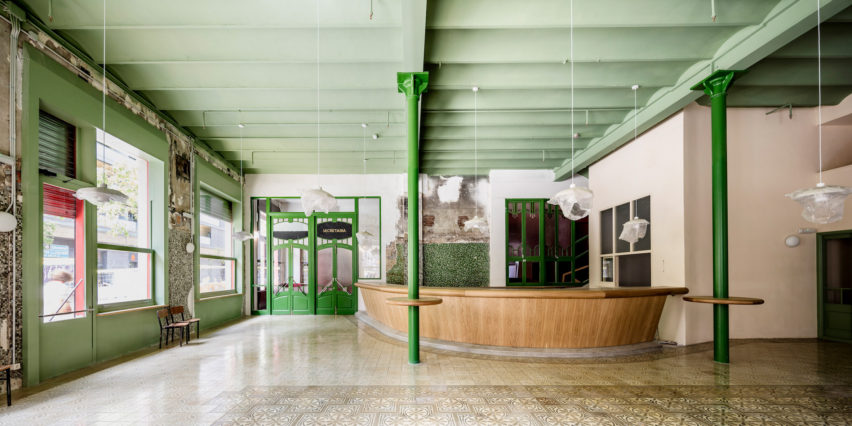
In Sala Beckett it's so funny that every door and every window is different. It's as if the carpenter woke up every day and, even if it was the same measurement, he thought of it in a different way. It is a treasure, but it's not a treasure because people don't see it.
Amy Frearson: Did you involve the local community in the redevelopment of the building?
Ricardo Flores: The neighbourhood memories of the building were something we had to take into account. It is a project with many different actors – so there were a lot of different people we talked to when we were working. But this is something that interests us.
We often do post-occupancy work – after finishing many of our projects, we go back to interview people and to see how the spaces are being occupied.
We often now go to Sala Beckett to see how it works, what they do, if they need something, etc. Tony Casares is really involving everyone in their atmosphere, spirit, ambitions, and we are very much with them still. Like today, we received an email. They need a canvas against the strong sun we have in Barcelona. They have a courtyard in the middle and until now they have used big umbrellas against the sun but now Tony wants to make a more stable canvas.
These details affect the atmosphere of the building, so he want us to build them. This is because Tony Casares understands that there is an equilibrium that needs to be kept.
Amy Frearson: The approach that you're describing sounds like it works because you're also based in Barcelona, but would perhaps be a challenge for projects abroad. Is this something you think about?
Ricardo Flores: I think the subjects we are talking about are actually very global, these stories of archaeology, of layers of times past in the building. No one is more important than any other. This is something that, in a way, you could implement in any other place.
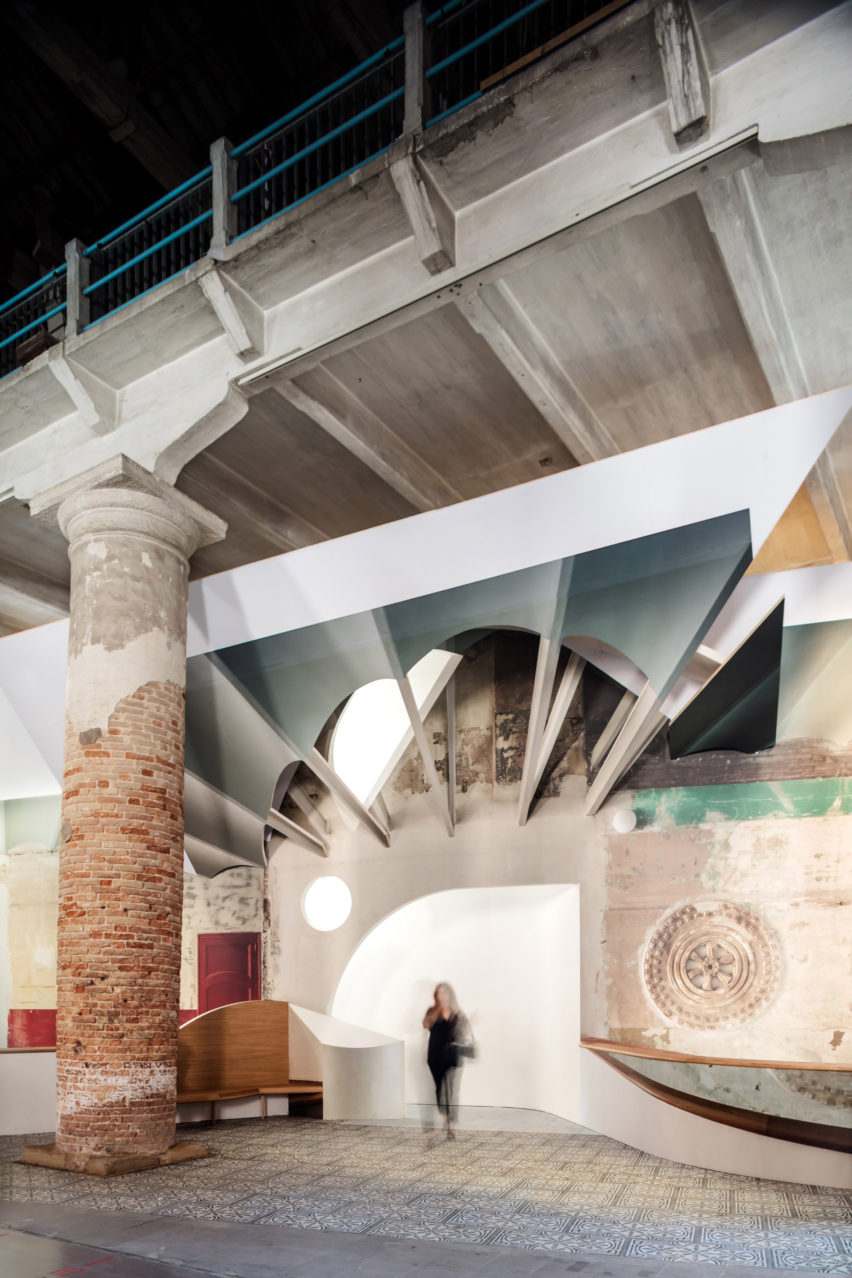
Eva Prats: We like to think of proximity but we also have works in Mallorca and Milan, and we manage. But with all of these clients, the relationship has been close.
When a building is finished and the people that occupy it start working in it, they will need things. I think it's good to go back to the architects that designed it. These architects will have a more global idea of how putting something in one place affects other things, and whether that thing is in keeping with the rest of the building.
For me personally, it's an issue that interests me a lot: the maintenance of buildings, how they can improve, but also how they can get worse. You see this in museums a lot – museums are supposed to be very beautiful, clean and well-kept structures, but suddenly you find a fire sign that has been placed without any care. So it is an issue.
We're very interested in maintaining a longer relationship with projects.
As I was saying at the beginning, the building is a test for us. It's one option, but it could be another one. The option that we build has been tested a lot but there could be another way around. So we think it's part of our research for us to go back and see how it's working.
Ricardo Flores: Each project becomes something in the middle of a longer discussion. In fact, all of our different projects remain present in our studio as things that interest us. When we look at a model that we have done, testing a skylight for example, we look at it and try to keep on going. In a way it is looking at our research backwards – seeing if it works, if it doesn't work – and it helps us to put in practice all the things that we have on our table now, two or three years later, when we also have other things that we can test.

Amy Frearson: It seems to me this idea of treating architecture as a research project shaped the way you presented Sala Beckett at the Venice Biennale. Tell me about that installation?
Ricardo Flores: We show the set design in front, which looks like something that has been there for many, many years. In the backstage area, we show how much work we have done to make it appear like nothing happened.
All these things in the backstage area of the piece are a reflection, a discussion about how we deal with heritage – how much research you make, what kind of documents and processes you go through, how careful you are, how you reuse with freedom. Buildings have to be useful, not ruins. So how do you make them look like you haven't touched them, but in fact you've touched them a lot?
Eva Prats: The way that the piece works with the Arsenale has a lot to do with our attitude towards the 'as found' of the existing. We wanted our piece to be almost touching all this.
We use the windows of the Corderie, we are almost touching the ceiling and we are almost touching the columns. It's a way we like to deal with existing elements, we use them and work with them, even if we are working against them. It's a way of waking them up, making them visible.
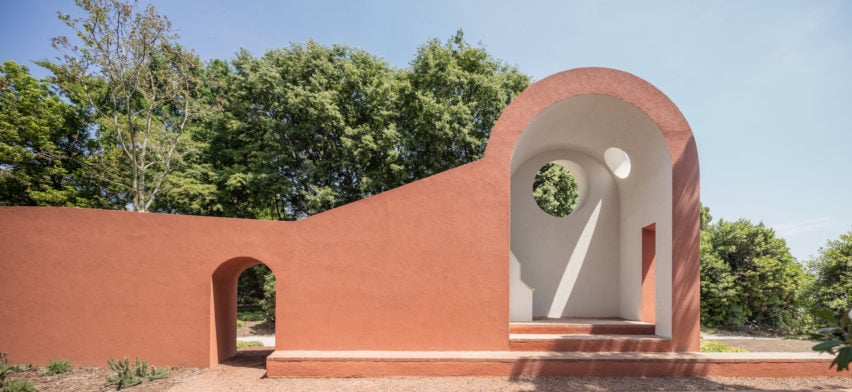
Amy Frearson: And how about the other piece you created for Venice, the Vatican chapel. Is there any relationship between this design and the ideas that shaped the Sala Beckett?
Ricardo Flores: It does have something to do with our work at Sala Beckett, in the state of a building that is not completely closed.
When we first entered the workers' cooperative it was, as Eva mentioned, in a very high state of ruin, with the sun, pigeons and rats coming in. But it was a beautiful state. This fragility, this state of open air that we found at the beginning, was so beautiful. When you get inside a place that is outside, it moves you. This happens in Sala Beckett – the sun comes through in the middle of the building, and there are walls that are broken.
We hope that, with our two proposals at Venice, we can celebrate this state of ruin, of light passing through. You are thrown against nature, in a way.